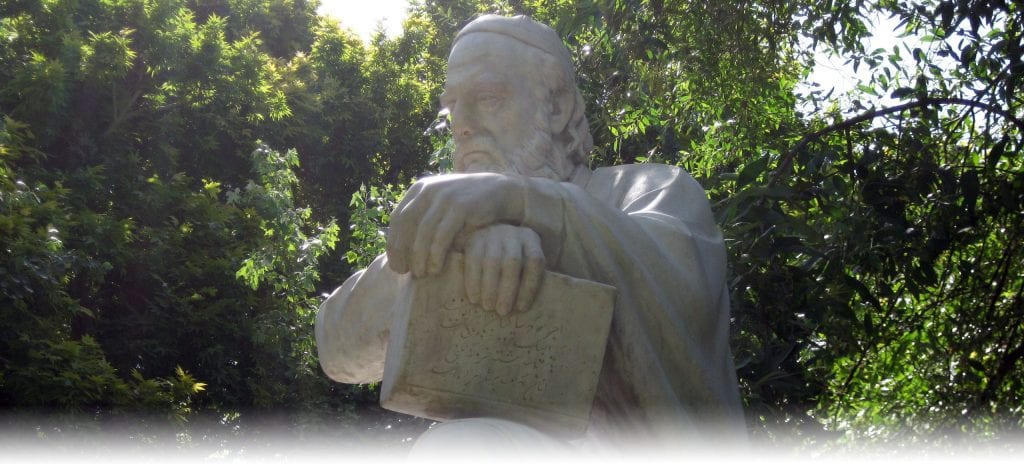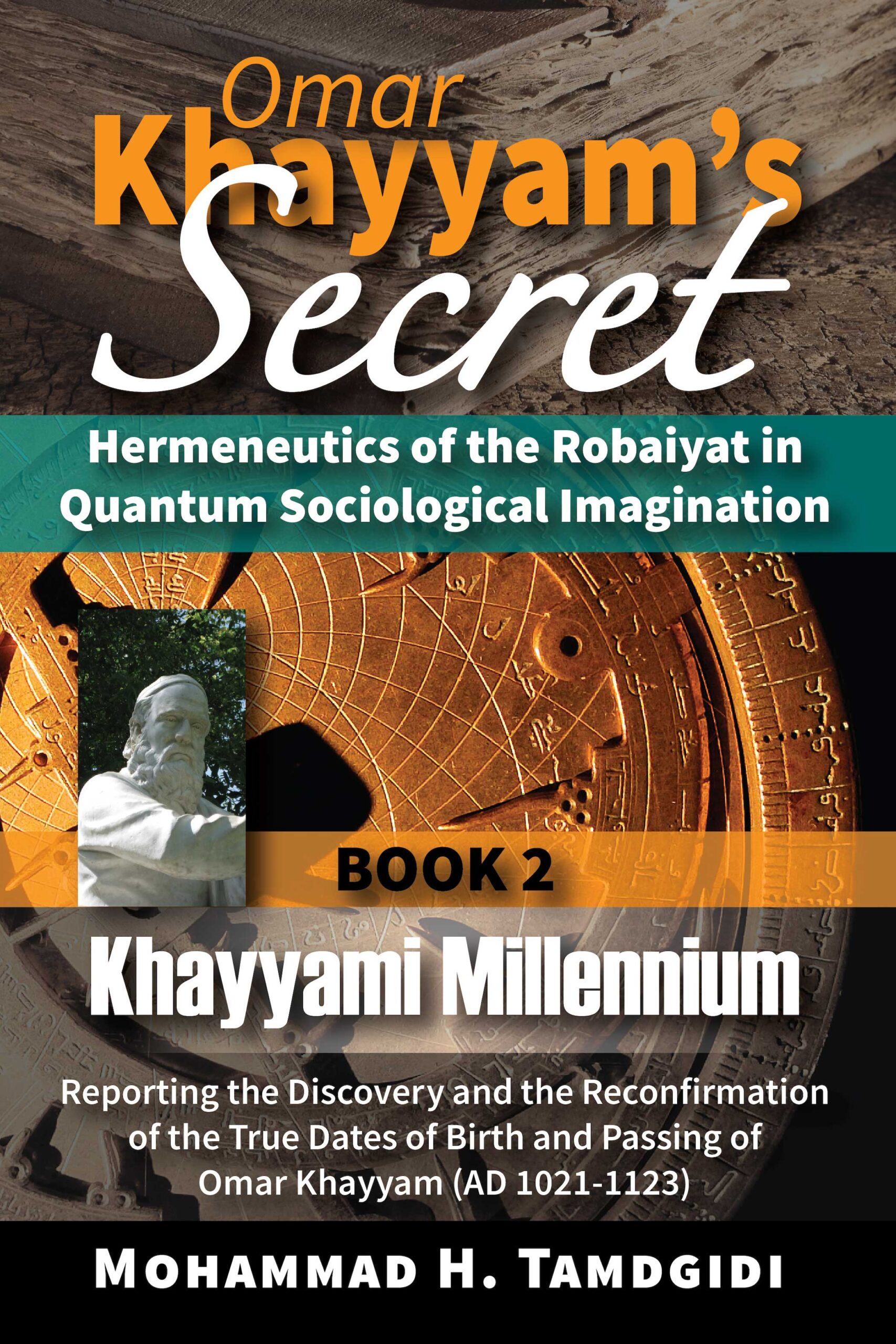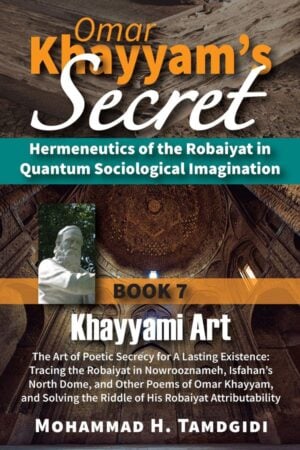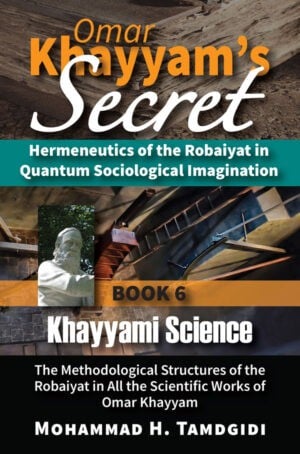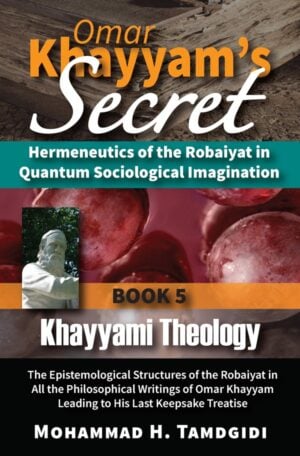Book Section: CHAPTER III — In Search of Omar Khayyam’s True Date of Passing: Superposing the Birth Date Findings With Beyhaqi’s Tatemmat Sewan el-Hekmat And Khazeni’s Mizan ol-Hekmat — by Mohammad H. Tamdgidi
$20.00
This essay, titled “In Search of Omar Khayyam’s True Date of Passing: Superposing the Birth Date Findings With Beyhaqi’s ‘Tatemmat Sewan el-Hekmat’ And Khazeni’s ‘Mizan ol-Hekmat,’” is the third chapter of the second book of the twelve-book series Omar Khayyam’s Secret: Hermeneutics of the Robaiyat in Quantum Sociological Imagination, authored by Mohammad H. Tamdgidi. The second book is subtitled Khayyami Millennium: Reporting the Discovery and the Reconfirmation of the True Dates of Birth and Passing of Omar Khayyam (AD 1021-1123).
Description
Abstract
This essay, titled “In Search of Omar Khayyam’s True Date of Passing: Superposing the Birth Date Findings With Beyhaqi’s Tatemmat Sewan el-Hekmat And Khazeni’s Mizan ol-Hekmat” is the third chapter of the second book of the twelve-book series Omar Khayyam’s Secret: Hermeneutics of the Robaiyat in Quantum Sociological Imagination, authored by Mohammad H. Tamdgidi. The second book is subtitled Khayyami Millennium: Reporting the Discovery and the Reconfirmation of the True Dates of Birth and Passing of Omar Khayyam (AD 1021-1123).
Tamdgidi’s main goal in this (and the following two chapters) is to determine as definitively as possible the date of passing of Omar Khayyam on the basis of the new finding about his true date of birth as reported in the preceding chapter.
His secondary purpose is to trace how the new finding allows for reimagining Khayyam’s interactions with others during his lifetime from the vantage of his true age during such interactions.
He chose to split his search for Khayyam’s definitive date of passing into three chapters for the reader’s convenience, starting with this chapter; however, they should be seen as parts of the same, ongoing, search, their findings often superposing and overlapping with one another considerably.
Tamdgidi states that his purpose in this chapter and the two that follow is to revisit all the available texts and versions thereof more carefully, in an effort to find a way of convincingly interpreting the various texts and reconciling their differences to such an extent that one can arrive at an undisputable consensus regarding Khayyam’s date of demise.
According to the author, there are basically four manuscripts on which most have focused to determine the date of passing of Omar Khayyam. The first manuscript is the biographical information offered for Khayyam in Tatemmat Sewan el-Hekmat (Supplement to the Chest of Wisdom) by Zahireddin Abolhasan Beyhaqi.
The second source is Mizan ol-Hekmat (Balance of Wisdom) (تتمه صوان الحكمة), by Abdorrahman Khazeni, also a grown-up contemporary of Khayyam and reportedly also one of his pupils in astronomy and scientific matters, implying that he must have also met him in person. The third source is Chahar Maqaleh (Four Discourses) by Nezami Arouzi, a Khayyam contemporary who offered his respects to him as a teacher (whether actually or in reverence it is not known).
And the fourth manuscript is one written and compiled by Yar Ahmad Rashidi Tabrizi, which has come to be known under the title Tarabkhaneh (House of Joy). This chapter covers the exploration of the first two of the above four main sources.
Tamdgidi states, based on the discovery of the true date of birth of Khayyam as reported in the earlier chapter of this book, that we can again entertain the possibility (not necessarily the certainty) that Nezam ol-Molk, and even Hasan Sabbah, and Omar Khayyam were childhood friends and that there may have been some grains of truth to the story reported by others.
The research as reported in this chapter also highlights the significance of Abol-Hasan al-Anbari as a significant teacher of Khayyam in astronomy. It also notes that based on the findings about Khayyam’s true birth date, it is certainly possible that he could have been a young student of Avicenna during the latter’s last peaceful years of life living in Isfahan.
The true date of birth sheds clear light on the senior status of Khayyam in relation to many of his contemporaries with whom he was interacting given his advancing age, strengthening the possibility that he may have as well served as the most senior and leading member of a team of astronomers invited by Soltan Malekshah and his minister Nezam ol-Molk to establish an observatory in Isfahan and reform the Persian solar calendar.
Following a careful rereading of the contents of the first two sources listed above, Tamdgidi offers the tentative conclusion that based on Beyhaqi’s Tatemmat Sewan el-Hekmat (Supplement to the Chest of Wisdom) and Abdorrahman Khazeni’s Mizan ol-Hekmat (Balance of Wisdom), there is simply no information that supports that Khayyam was alive anytime after 517 LH.
The information supports that definitively Khayyam was alive sometime in the year 515 LH, at least, and some information given may even imply that he was alive in the year 516 LH, at least, since Beyhaqi related a conversation he had with the prince Faramarz in that year, where Khayyam is specifically mentioned as the topic of that conversation but God’s mercy wishing or other information is not provided suggesting that Khayyam had passed away by then.
Recommended Citation
Tamdgidi, Mohammad H. 2021. “CHAPTER III — In Search of Omar Khayyam’s True Date of Passing: Superposing the Birth Date Findings With Beyhaqi’s “Tatemmat Sewan el-Hekmat” And Khazeni’s “Mizan ol-Hekmat.”” Pp. 133-170 in Omar Khayyam’s Secret: Hermeneutics of the Robaiyat in Quantum Sociological Imagination: Book 2: Khayyami Millennium: Reporting the Discovery and the Reconfirmation of the True Dates of Birth and Passing of Omar Khayyam (AD 1021-1123). (Human Architecture: Journal of the Sociology of Self-Knowledge: Vol. XV, 2021. Tayyebeh Series in East-West Research and Translation.) Belmont, MA: Okcir Press.
Where to Purchase Complete Book: The various editions of the volume of which this Book Section is a part can be ordered from the Okcir Store and all major online bookstores worldwide (such as Amazon, Barnes&Noble, Google Play, and others).
The Robaiyat of Omar Khayyam has also been referred to as “Rubaiyat of Omar Khayyam” (in Persianرباعيات حكيم عمر خيام نيشابوري) using an alternative transliteration from the Persian (or Arabic). Khayyam’s horoscope in Persian is referred to as طالع عمر خيام.
